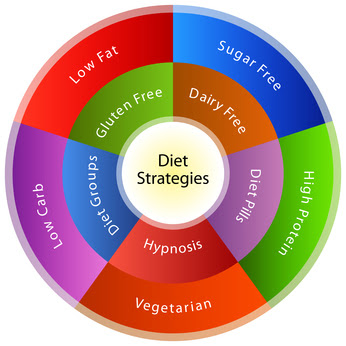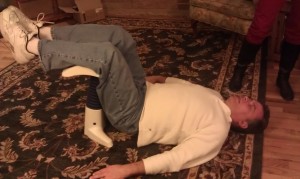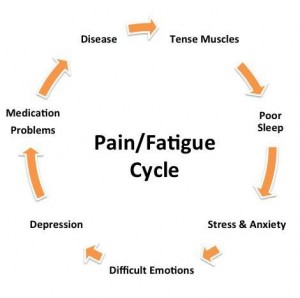Is it time to go on a diet? Again? But what about last time? How did that go? Thanks to Dr. Steve Chaney, I have some ways to evaluate what might give you lasting success this time around.
4 mistakes to avoid when choosing weight loss diets,
6 tips for choosing the best weight loss diet, and
7 tips for keeping the weight off.
Which diet is best?
Like millions of Americans, you have probably set a goal to eat healthier, lose weight, or both. But which diet is best? Vegan, Paleo, Keto, 360, Intermittent Fasting, low-carb, low fat – the list is endless.
And then there are the commercial diets: Meal replacements, low calorie processed foods, prepared meals delivered to your door – just to name a few of the categories.
You can choose to count calories, focus on portion sizes, or keep a food journal.
And, if you really want to live dangerously, you can try the latest diet pills that claim to curb your appetite and rev up your metabolism.
The diet that works requires effort. And a change of mindset. There is no magic wand that will chase the extra pounds away forever.
Mistakes To Avoid When Choosing The Best Diet
1) Endorsements.
Endorsements by your favorite athlete or public person are paid for.
Endorsements by Dr. Strangelove and his buddies can be equally misleading. They usually tell you that the medical establishment has been lying to you, and they have discovered the “secret” to permanent weight loss and the “Fountain of Youth”.
Recommendations of the medical and scientific communities usually represent a consensus statement by the top experts in their field. I would choose their advice over Dr. Strangelove’s opinion any day.
2) Testimonials.
Most of the testimonials you see online or in print are either paid for or are fake.
Testimonials by your friends can be equally misleading. We are all different. What works for your friend or for your trainer may not work for you.
For example, some of us do better on low-carb diets, and others do better on low fat diets.
3) Diets Based on “Magic” Or “Forbidden” Foods or Food Groups.
We have 5 food groups for a reason. Each food group provides a unique blend of nutrients and phytonutrients. And each plant food group provides a unique blend of fibers that support the growth of different types of friendly gut bacteria.
The bottom line is that each of us does better with some foods than others, but there are no “magic” or “forbidden” foods that apply to everyone.
4) “Magic” Diets.
Dr. Chaney book, “Slaying The Food Myths”, doesn’t feature a “magic” diet that is going to make the pounds melt away and allow you to live to 100. Instead, he recommends a variety of healthy diets and suggests you choose the one that fits you best.
There is an allure of “magic” diets. Dr. Strangelove claims the diet will be effortless. He gives you some scientific-sounding mumbo-jumbo to convince you the diet is scientifically sound. Then he cites some clinical studies showing the diet will cause you to lose weight and will improve your health parameters (things like cholesterol, triglycerides, blood sugar, and blood pressure). It sounds so convincing.
- The studies are all short-term (usually 3 months or less).
- When you rely on short-term studies, the very low-fat Vegan diet and very low-carb Keto diet give you virtually identical weight loss and improvement in health parameters!
Those two diets are as different as any two diets could be. That means we can forget all the scientific-sounding mumbo-jumbo as to why each of those diets work. Instead, we should ask what these two diets have in common.
The answer is simple:
#1: The clinical studies are comparing “magic” diets to the typical American diet. Anything is better than the typical American diet! It is high in sugar, refined carbohydrates, saturated fat, and highly processed foods. No wonder the “magic” diets look so good.
#2: The diets are whole food diets. Anytime you eliminate sodas, fast foods, and highly processed foods, you will lose weight.
#3: The diets eliminate one or more food groups. Whenever you eliminate some of your favorite foods from your diet, you tend to lose weight without thinking about it. I call this the cream cheese and bagel phenomenon.
- If you are following a low-fat diet, it sounds great to say you can eat all the bagels you want. But without cream cheese to go with the bagels, you tend to eat fewer bagels.
- If you are following a low-carb diet, it sounds great to say you can eat as much cream cheese as you want, but without bagels to go with your cream cheese, you tend to eat less cream cheese.
#4: Because they eliminate many of your favorite foods, “magic” diets make you focus on what you eat. Whenever you focus on what you eat, you tend to lose weight. That is why food journals and calorie counters are effective.
#5: Finally, whenever you lose weight, your health parameters (cholesterol, triglycerides, blood sugar, and blood pressure) improve.
Tips For Successful Weight Loss
What should you look for in choosing a healthy weight loss diet? Here are the top 6 tips.
1) Choose whole food diets. Avoid sodas, fast foods, and highly processed foods.
2) Choose primarily plant-based diets. These can range from Vegan through semi-vegetarian, Mediterranean, DASH, and Nordic. All are healthy diets.
When we look at long term (10-20 year) studies:
- Vegetarians weigh less and are healthier than people consuming the typical American diet.
- People consuming semi-vegetarian, Mediterranean, and DASH diets are healthier than people consuming the typical American diet.
When we look at low-carb diets:
- People consuming plant-based low-carb diets weigh less and are healthier than people consuming the typical American diet.
- People consuming meat-based low-carb diets are just as fat and unhealthy as people consuming the typical American diet.
- The Atkins low-carb diet has been around for more than 50 years, and there is no evidence it is healthy long-term.
3) Choose diets that include a variety of foods from all 5 food groups. I have discussed the rationale for that recommendation above.
4) Choose diets that consider meat as a garnish, not a main course.
5) Choose diets that feature healthy carbs and healthy fats rather than low-carb or low-fat diets.
6) Think lifestyle, not diet. If you choose a restrictive diet so you can achieve quick weight loss, you will probably be just as fat and unhealthy next December 31st as you are this year. Instead, choose diets that teach healthy eating and lifestyle changes that you can make a permanent part of your life.
Tips For Keeping The Weight Off
You know the brutal truth. Around 95% of dieters regain everything they lost and then some within a few years. You have probably gone through one or more cycles of weight loss and regain yourself – something called “yo-yo dieting”. You may even be asking yourself if it is worth bothering to try to lose weight this year.
Rather focusing on the negative statistics of weight loss, let’s look at the good news. There are people who lose the weight and keep it off. What do they do?
There is an organization called the National Weight Control Registry that has enrolled more than 10,000 people who have lost weight and kept it off. The people in this group lost weight on almost every diet imaginable. However, here is the important statistic: On average people in this group have lost 66 pounds and kept it off for at least 5 years.
The National Weight Control Registry has kept track of what they have done to keep the weight off. Here is what they do that you may not be doing:
1) They consume a reduced calorie, whole food diet.
2) They get lots of exercise (around 1 hour/day).
3) They have internalized their eating patterns. In short, this is no longer a diet. It has become a permanent part of their lifestyle. This is the way they eat without even thinking about it.
4) They monitor their weight regularly. When they gain a few pounds, they modify their diet until they are back at their target weight.
5) They eat breakfast on a regular basis.
6) They watch less than 10 hours of TV/week.
7) They are consistent (no planned cheat days).
Which Diet Is Best?
Now it is time to get back to the question you are asking right now, “Which diet is best?” I have covered a lot of ground in this article. Let me summarize it for you.
If you are thinking about popular diets:
- Primarily plant-based diets ranging from Vegetarian to Mediterranean and Dash are associated with a healthier weight and better health long term.
- If want to lose weight quickly, you may want to start with the more restrictive plant-based diets, like Vegan, Ornish, or Pritikin.
- If you do better with a low-carb diet, my recommendation is the low-carb version of the Mediterranean diet called Med-Plus. It is a whole food version of the Mediterranean diet that minimizes added sugar and refined grains.
- If your primary goal is rapid weight loss, you could also start with one of the healthier of the restrictive low-carb diets, like the Paleo or the 360 diet. I do not recommend the Keto diet.
- No matter what diet you start with, plan to transition to the primarily plant-based diet that best fits your lifestyle and food preferences. This is the diet you will want to stick with to maintain your weight loss and achieve better health long term.
- Plan on permanent lifestyle change rather than a short-term diet. Otherwise, you are just wasting your time.
- Eat whole foods. Big Food keeps up with America’s favorite diets and is only too happy to sell you highly processed foods that match your favorite diet. Avoid those like the plague.
If you are thinking about commercial diets featuring meal replacement products:
- Look for meal replacement products that:
- Do not contain artificial sweeteners, flavors, or preservatives.
- Use non-GMO protein. A non-GMO certification for the other ingredients is not necessary.
- Have stringent quality controls in place to assure purity. “Organic” and/or “non-GMO” on the label do not assure purity.
- Look for programs that can provide clinical studies showing their diet plan is effective for weight loss and for keeping the weight off. Many programs have short-term clinical studies showing they are effective for weight loss, but very few have longer-term studies showing the weight stays off.
- Finally, look for programs that teach permanent lifestyle change. This should include guidance on exercise and healthy eating.
Dr. Chaney does not recommend most commercial diets that feature prepared low-calorie foods “shipped right to your door” as a major part of their program. The foods are highly processed. Plus, they include all your favorite unhealthy foods as part of the program. Even if they include lifestyle change as part of their program, they are undermining their message with the foods they are providing you.
He adds that Weight Watchers is highly recommended by most experts in the field. Weight Watchers emphasizes journaling and counting calories, which is a plus because it makes you focus on what you are eating. They also have a good lifestyle program and support that can help you transition to permanent lifestyle change if you are willing to put in the effort.
However, I don’t recommend their prepared low-calorie foods. They are no better than foods provided by the other commercial diet programs.
Get in touch with me if you are curious about what I have done to lose that 25 pounds and keep them off for years. Let me know how I can support you in your effort to claim a healthy life style for yourself.
Be well, Do well, and Keep Moving. Betsy
Betsy Bell Enterprises LLC, 206 409 5940, Betsy@hihohealth.com
Sign up to receive my monthly Health Tips newsletter.






 Cartilage is 65 to 80 percent water, so staying hydrated is important for the health and lubrication of your joints. Maintaining proper hydration is even more important for individuals who suffer from gout. Water helps flush uric acid out of the body, and studies suggest staying hydrated may help prevent flare-ups. It isn’t necessary to count the number of glasses of water you drink in a day — the latest research suggests that if you take time to drink a glass whenever you feel thirsty, you’ll probably do fine. You are already drinking enough water, which is important for managing your arthritis. To spice things up, you might want to try flavoring your water with fresh fruit slices or drinking unsweetened green tea or herbal tea — there are so many delicious and fun varieties. And be sure to avoid sugary drinks like soda, sweetened water, fruit drinks, sweet tea, and froufrou coffee concoctions.
Cartilage is 65 to 80 percent water, so staying hydrated is important for the health and lubrication of your joints. Maintaining proper hydration is even more important for individuals who suffer from gout. Water helps flush uric acid out of the body, and studies suggest staying hydrated may help prevent flare-ups. It isn’t necessary to count the number of glasses of water you drink in a day — the latest research suggests that if you take time to drink a glass whenever you feel thirsty, you’ll probably do fine. You are already drinking enough water, which is important for managing your arthritis. To spice things up, you might want to try flavoring your water with fresh fruit slices or drinking unsweetened green tea or herbal tea — there are so many delicious and fun varieties. And be sure to avoid sugary drinks like soda, sweetened water, fruit drinks, sweet tea, and froufrou coffee concoctions. I know you don’t smoke, but I just wanted to share with you a few good reasons to stay smoke-free: Smoking delivers toxins throughout the body, causing inflammation and increasing the risk of arthritis. In one study, smokers were more than twice as likely to develop rheumatoid arthritis than people who didn’t smoke. In addition, researchers from a multicenter study reported in 2005 that smokers had a greater risk of osteoarthritis of the knee, possibly because smoking interferes with the body’s ability to repair its own cartilage. The bottom line is that staying smoke-free is a wise choice!
I know you don’t smoke, but I just wanted to share with you a few good reasons to stay smoke-free: Smoking delivers toxins throughout the body, causing inflammation and increasing the risk of arthritis. In one study, smokers were more than twice as likely to develop rheumatoid arthritis than people who didn’t smoke. In addition, researchers from a multicenter study reported in 2005 that smokers had a greater risk of osteoarthritis of the knee, possibly because smoking interferes with the body’s ability to repair its own cartilage. The bottom line is that staying smoke-free is a wise choice! you’re already there! Being overweight can put added physical stress on your joints, which can aggravate arthritis (particularly osteoarthritis) and increase your levels of pain. An unhealthy weight can also promote inflammation, which as I’ve mentioned is the root of arthritis. Another reason to keep eating right and exercising!
you’re already there! Being overweight can put added physical stress on your joints, which can aggravate arthritis (particularly osteoarthritis) and increase your levels of pain. An unhealthy weight can also promote inflammation, which as I’ve mentioned is the root of arthritis. Another reason to keep eating right and exercising! arthritis. It can help you lose or maintain weight, which reduces the overall stress impact on joints. Strong muscles can absorb shock from daily movements, keep joints stable, and protect against additional joint injury. Stretching and yoga can improve flexibility and range of motion and reduce joint stiffness. Swimming and water aerobics allow free movement without added stress on the joints. Walking is another manageable, low-impact form of aerobic exercise appropriate for most individuals with arthritis. All good reasons to maintain your active lifestyle!
arthritis. It can help you lose or maintain weight, which reduces the overall stress impact on joints. Strong muscles can absorb shock from daily movements, keep joints stable, and protect against additional joint injury. Stretching and yoga can improve flexibility and range of motion and reduce joint stiffness. Swimming and water aerobics allow free movement without added stress on the joints. Walking is another manageable, low-impact form of aerobic exercise appropriate for most individuals with arthritis. All good reasons to maintain your active lifestyle!